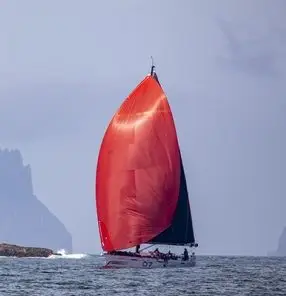

In 8 weeks – Tuesday, June 27th – the first of three successive waves of starters will cross the start line for their 2225-mile journey westward across the Pacific towards Hawaii in the 52nd biennial Transpac Race, organized by the Transpacific Yacht Club (TPYC). With over 60 boats entered, the 2023 Transpac Race promises to be another classic race to Honolulu. Most will have said emotional goodbyes and received well-wishing Alohas from family and friends from the shoreside venue in the Cabrillo Way Marina in San Pedro before their short commute to the start area in the vicinity of Point Fermin.
Most everyone will be feeling a palpable sense of relief to be finally heading to sea. For the newbies there will be nervous energy and excitement about what lies ahead and what to expect. For the veterans this energy will be focused on the details of how to get the most from the boat in the initial phase of getting off the start line and around the West End of Catalina Island, 26 miles to the west.
For all teams the navigator will have apprised them of what to expect and their game plan for the race. The position and strength of the Pacific High is the driving force for this race, so it will have been tracked and charted, scenarios discussed, and routes run based on different weather models. Some years the path is clear, like in the last race in 2021, and in other years this can get complicated. And with the starts spread from Tuesday to Saturday during the week from June 27th to July 1st, where the slowest boats start first and the fastest boats start last, the weather situation will likely evolve to produce different strategies and different results among members of each start date’s fleet.
Regardless, the start day will be the culmination of months and perhaps years of planning and preparation for this race, one of ocean racing’s classic tests of sailing prowess and seamanship having been first sailed in 1906. First, there is getting a team together: who has the skill sets, the compatible personalities, and the availability and interest to take this on. Racing for this length of time and distance is not for everyone for sure.
Second, there are the endless lists of replacements, repairs and upgrades: not only does the boat, its rig, sails and systems have to be in full working order and provisions planned and loaded for the trip, but the crew itself will have to have been through many requirements before reaching the start line. There are safety seminar requirements, crew overboard drills, a minimum 150-mile offshore passage requirements, communications equipment installed and vetted, and a never-ending list of safety gear and equipment acquired and installed to the satisfaction of both the team and TPYC race inspectors.
“This is not an easy race to prepare for,” says TPYC Commodore Tom Trujillo, “and this is precisely why many do it. The rewards are in having met this challenge, getting to the start line, and the outstanding sailing conditions we have for this race with its unique Aloha hospitality that awaits at the finish.”


